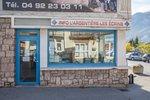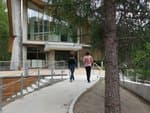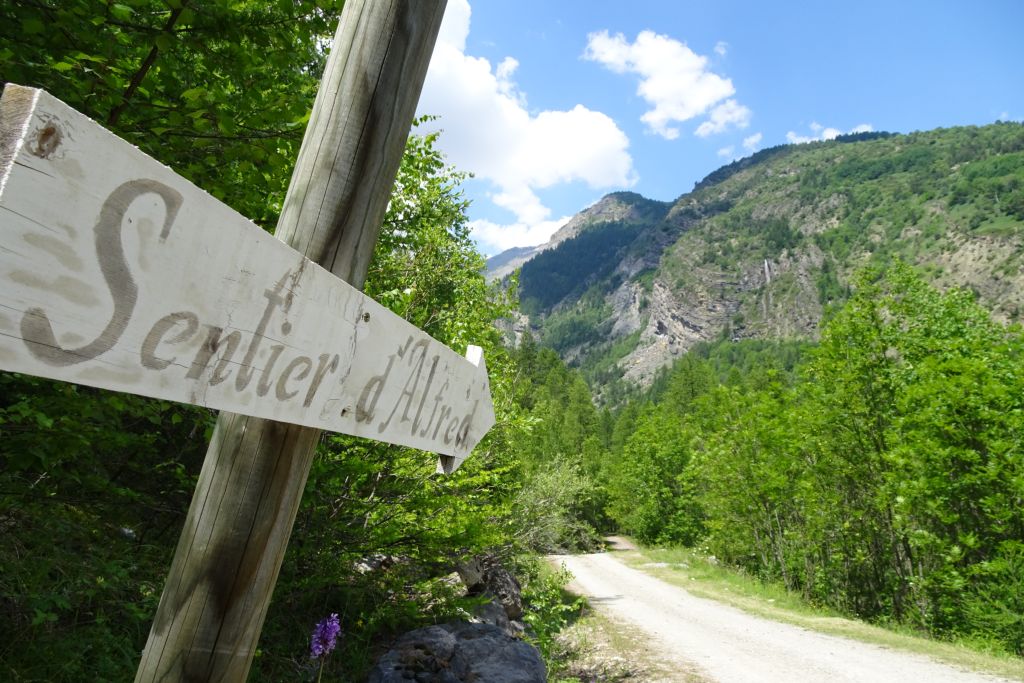
THEMED PATH: Mr Alfred's wood
The nine stopping points along the route draw you into the poetic and magical world of Alfred and prompt the creation of a thousand and one objects using natural elements. A way of entering the no-less magical world of the forest
Description
Opposite the Valley Centre ("Maison de la Vallée"), follow the waysigns for the "Sentier d'Alfred". The pathway first drops down into meadows surrounded by groves of trees, until it comes to the Biaysse, which you cross via a bridge.
- After the bridge, keep left on this pathway.
- Turn right onto a track. It rises gently up to a bridge, the Pont de l'Église, which takes you back across the Biaysse. Then, follow the road which drops back down towards Le Ribes (Freissinières).
- At the car park just outside the village, don't miss the path on the right: near the cross at the bottom of the car park, you need to go down a set of steps and turn right to drop down to the river. Then, follow a former dyke built on a stone foundation to return to your starting point.
- Departure : Valley Centre ("Maison de la Vallée"), Freissinières
- Arrival : Valley Centre ("Maison de la Vallée"), Freissinières
- Towns crossed : Freissinières
Altimetric profile
Recommandations
A walk through level terrain, accessible even for very young children.
Information panels are installed all along the path
Check weather conditions before setting off.
Rescue services contact details: Secours Montagne (Mountain Rescue): +33 (0)4 92 22 22 22 or 112
Show consideration for the work of farmers, livestock keepers and owners
Close all gates behind you
Take your litter home
Do not take shortcuts across pastureland
Information desks
23 Avenue de la République, 05120 L'Argentière-La Bessée
Vallouise Park house
, 05290 Vallouise
Information, documentation, models, exhibitions, screenings, product sales and works of the Park. Guided tours for school, reservation required. The new Park House opened in Vallouise since June 1, and offers visitors an interactive permanent exhibition inviting to explore the area and its heritage. A temporary exhibition space will allow a renewed offer. Finally, the device is completed by an audiovisual room to organize screenings and conferences Free admission. All animations of the Park are free unless otherwise stated.
Transport
Public transport >> www.pacamobilite.fr
Consider car-sharing >> www.blablacar.fr
For more information, ask at the Tourist Information Office nearest to the trail starting point.
Access and parking
11.5 km from L'Argentière-La Bessée, take the N94 and the D38.
6 points of interest
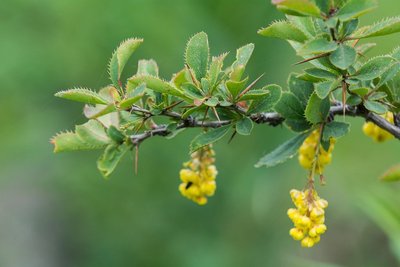
Épine-vinette en fleurs - Mireille Coulon - Parc national des Écrins  Flora
FloraThe common barberry
The common barberry is a bush with long thorns arranged in threes, and with oval serrated leaves. In spring, it produces clusters of yellow flowers, which later develop into red, oval and elongated berries. These tart fruits are edible and can be made into jellies... if you have the patience to gather them! This shrub grows almost everywhere.
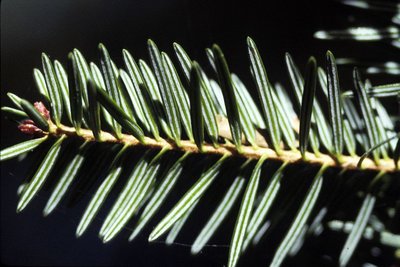
Aiguiles de sapin - Parc national des Écrins  Flora
FloraThe fir
The fir thrives on this north-exposed slope, called the ubac. Its needles have two white stripes on their undersides. They are arranged on either side of the boughs, and not all the way around them, which distinguishes it from the spruce. The elongated cones stand upright, rather than hanging downwards. They grow in large number, often mingling with larch trees under whose shade they can grow. By contrast, the larch - the "tree of light" - cannot grow under the cover of fir trees.
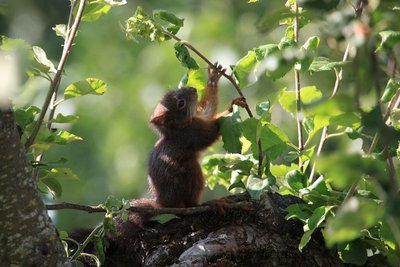
Ecureuil roux - Marc Corail - Parc national des Écrins  Fauna
FaunaThe red squirrel
Elegant and alert, a squirrel crosses the track, followed by its long feathery tail. Red? This one is dark brown. In the mountains this rodent has adopted a “solar panel” strategy, on the principle that dark colours absorb the heat more efficiently. It is active during the day and does not hibernate, although it does minimise its activity on days when the weather is bad. It is a protected species.

Section de feuille de prêle des rivières - Cédric Dentan - Parc national des Écrins  Flora
FloraThe horsetail
On the banks of a stream, on the edge of a ditch a plant grows which resembles a large bottle brush... or a horse's tail, depending on your imagination. It's the field horsetail, a plant related to ferns. It is known for its medicinal properties because it is rich in silica, a powerful remineraliser for the bones, cartilage and skin. There are several species of horsetail.
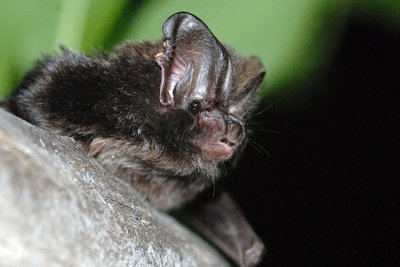
La barbastelle - Mireille Coulon - Parc national des Écrins  Fauna
FaunaThe barbastelle
In the village, birds build their nests in the old walls and bats live in the attics. Some hide behind shutters that are secured open against the walls. The barbastelle is a rare species of bat. Like all other bat species, it is protected. The hamlet of Le Ribes is privileged to be its home in the summer. This small mammal feeds on a large number of insects every night. It «moves house» frequently if it is disturbed or simply as a precaution.
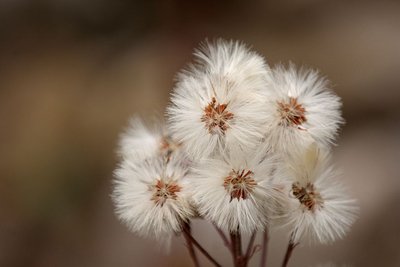
Pétasite hybride en fruit - Mireille Coulon - Parc national des Écrins  Flora
FloraThe petasites hybridus or butterbur
On the banks of the stream there is a plant with very broad leaves: the petasites hybridus or butterbur. In Ancient Greek, the petasos was a round felt hat. Nobody knows whether the devil wears this hat, but the plant is certainly used as a herbal remedy. Common in the lowlands, it is generally quite scarce in the mountains, although other species of petasites do grow at higher altitude. In any event, it makes a great hat!
Accessibility
- Accessibility level :
- Beginner
- Emergency number :
- 114
Source
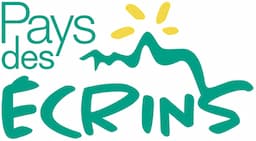
Report a problem or an error
If you have found an error on this page or if you have noticed any problems during your hike, please report them to us here:

